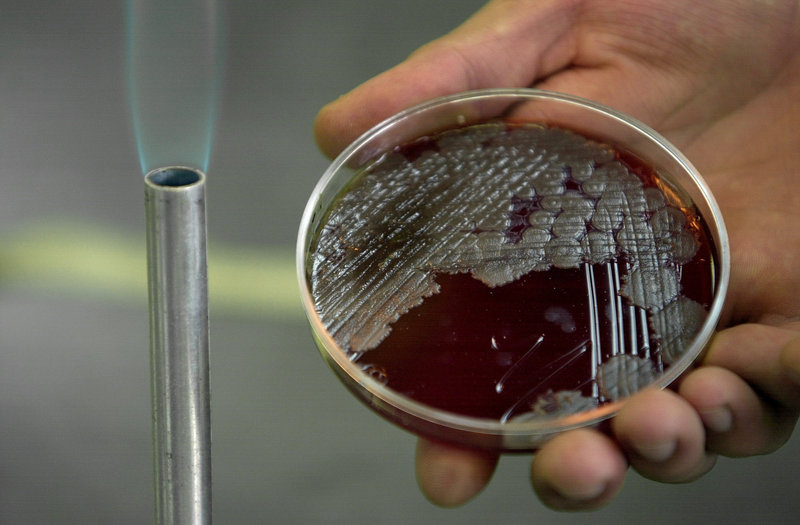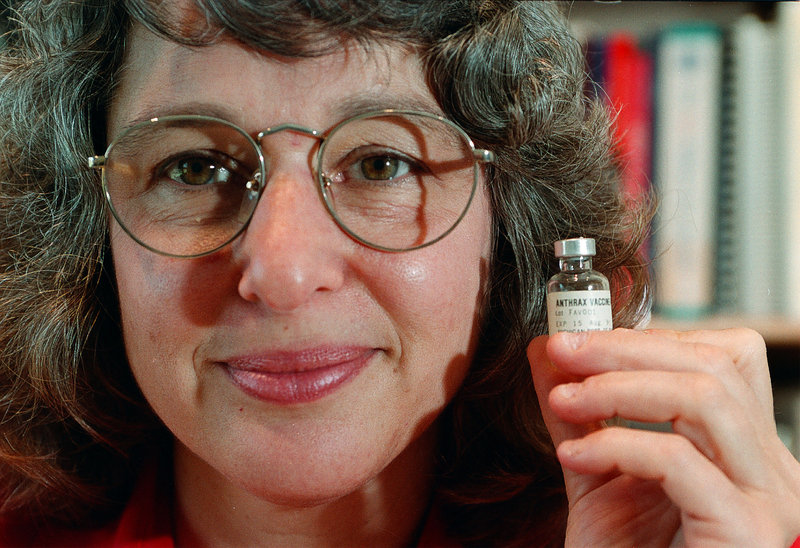WASHINGTON – The Obama administration is wrestling with the thorny question of whether scientists should inject healthy children with the anthrax vaccine to see whether the shots would safely protect them against a bioterrorism attack.
The other option is to wait until an attack happens and then try to gather data from children whose parents agree to inoculate them in the face of an actual threat.
A key working group of federal advisers in September endorsed testing, sparking objections from those who consider that step unethical, unnecessary and dangerous. The National Biodefense Safety Board (NBSB), which advises the federal government, meets Friday to vote on its working group’s recommendation.
“At the end of the day, do we want to wait for an attack and give it to millions and millions of children and collect data at that time?” said Daniel Fagbuyi of Children’s National Medical Center in Washington, who chaired the group. “Or do we want to say: ‘How do we best protect our children?’ We can take care of grandma and grandpa, uncle and auntie. But right now we have nothing for the children.”
The vaccine has been tested extensively in adults and has been administered to more than 2.6 million people in the military. But the shots have never been tested or given to children, leaving it uncertain how well it works in younger people and at what dose, and whether it is safe.
Unlike with measles, mumps and other diseases, the chance that children will be exposed to anthrax is theoretical, making the risk-benefit calculus of testing a vaccine on them much more questionable.
“It’s hard to believe that it’s something that makes a great deal of sense,” said Joel Frader, a pediatrician and bioethicist at Northwestern University’s Feinberg School of Medicine. “It would be difficult to justify testing it on kids simply on the hypothetical possibility that there might be an attack.”
Anthrax is a life-threatening infection caused by a toxin-producing bacteria long considered a bioterrorist’s likely choice because it is relatively easy to produce and distribute over a large area. A week after the Sept. 11, 2001, attacks, letters containing anthrax spores arrived at several media offices and two Senate offices, killing five people and sickening 17 others. The FBI eventually concluded that the letters were mailed by Bruce Ivins, a disgruntled scientist at Fort Detrick in Maryland who committed suicide in 2008, although some experts question the FBI’s findings.
As part of a broad effort to better protect Americans against bioterrorism, the Pentagon launched a controversial military anthrax immunization program in 1998 that was challenged in court over questions about the vaccine’s safety and reliability.
Currently, the Pentagon requires the shots for personnel assigned to bioterrorism defense activities and some other special units, as well as those deployed 15 or more days in the Middle East and some nearby countries, and in South Korea.
The federal government has spent $1.1 billion to stockpile the vaccine to protect Americans in the event of an attack. Antibiotics would help protect those immediately exposed. The vaccine would defend against lingering spores, which is how the pathogen lurks in a dormant state. The vaccine is made from a piece of a strain of anthrax that doesn’t cause the illness.
In April, Nicole Lurie, the assistant secretary in charge of bioterrorism at the Department of Health and Human Services, asked the 13-member biodefense board to evaluate whether the vaccine should be tested in children. A federal simulation of an anthrax attack on San Francisco, called Dark Zephyr, raised questions about how to handle children.
“If there were an anthrax release and we needed to administer anthrax vaccine, we have no experience with kids. It’s never been in the arm of a kid,” Lurie said. “I started asking myself, ‘Is this the right way to respond in an emergency?’ “
Those concerns were heightened by the public wariness that had been shown toward the H1N1 influenza pandemic vaccine.
“There is a lot of skepticism on the part of the public about vaccines in general,” Lurie said. “If you had a situation where a vaccine has never been given to a child, it’s pretty hard to think what you could say to people about its safety and efficacy.”
But testing drugs and vaccines in children is problematic. Parents generally are only allowed to let their children participate in studies if they would face minimal risk or are likely to benefit directly or indirectly in some way.
“With this, you’re putting children at risk for no clear scientific or medical benefit,” said Meryl Nass, a doctor in Bangor, Maine, who is one of the most outspoken critics of testing the vaccine in children.
Nass and others maintain that there serious questions about the vaccine’s effectiveness in adults as well as concerns about sometimes serious complications among those vaccinated in the military.
A variety of complications have been reported, including nervous system and autoimmune disorders, Nass said.
“Really, the core question is ‘Why? Why test?’ ” said Bruce Lesley, president of First Focus, a Washington-based advocacy group for children. “We don’t want to be subjecting kids to risks needlessly.”
“What exactly are we going to learn?” said Vicky Debold, an associate professor of health administration and policy at George Mason University. “We’ll know what antibody levels these infants produce, but do we know those antibodies are going to protect against death due to anthrax exposure?”
After sifting through the scientific, social and ethical conundrums raised by this question, the eight-member working group concluded that it would be ethically justifiable to conduct a study, which would provide crucial information, such as whether the vaccine is safe and how many doses would be needed.
“A lot of things have happened that we didn’t think could happen. I think the threat is real and we should be prepared,” said Fagbuyi, an assistant professor of pediatrics and emergency medicine at the George Washington University School of Medicine.
Fagbuyi and others dispute concerns about the vaccine’s safety, noting that the Food and Drug Administration, the National Academy of Sciences and many other independent authorities have concluded that the vaccine is as safe as other commonly used vaccines, producing serious complications very rarely.
“Our role is to protect children,” said John Bradley of the University of California at San Diego, who advised the working group on behalf of the American Academy of Pediatrics. “If the military is telling us there is a credible threat, the best way to protect children is to have the data.”
If the board endorses the recommendation, Lurie will meet with counterparts at the FDA, the National Institutes of Health and other agencies to work out the details, including how many children would be studied, at what ages and doses, and how costs would be covered.
“Because it’s such a heated issue, I’ve tried hard to keep an arm’s length until the board makes a recommendation to me,” Lurie said. “To be honest, the safest and easiest thing to do would be to not make a decision and kick the can down the road. But it seemed to me it that would be socially irresponsible. I would hate for a lot of children to die because we didn’t have enough information for the public to feel comfortable getting vaccine.”
Send questions/comments to the editors.




Comments are no longer available on this story